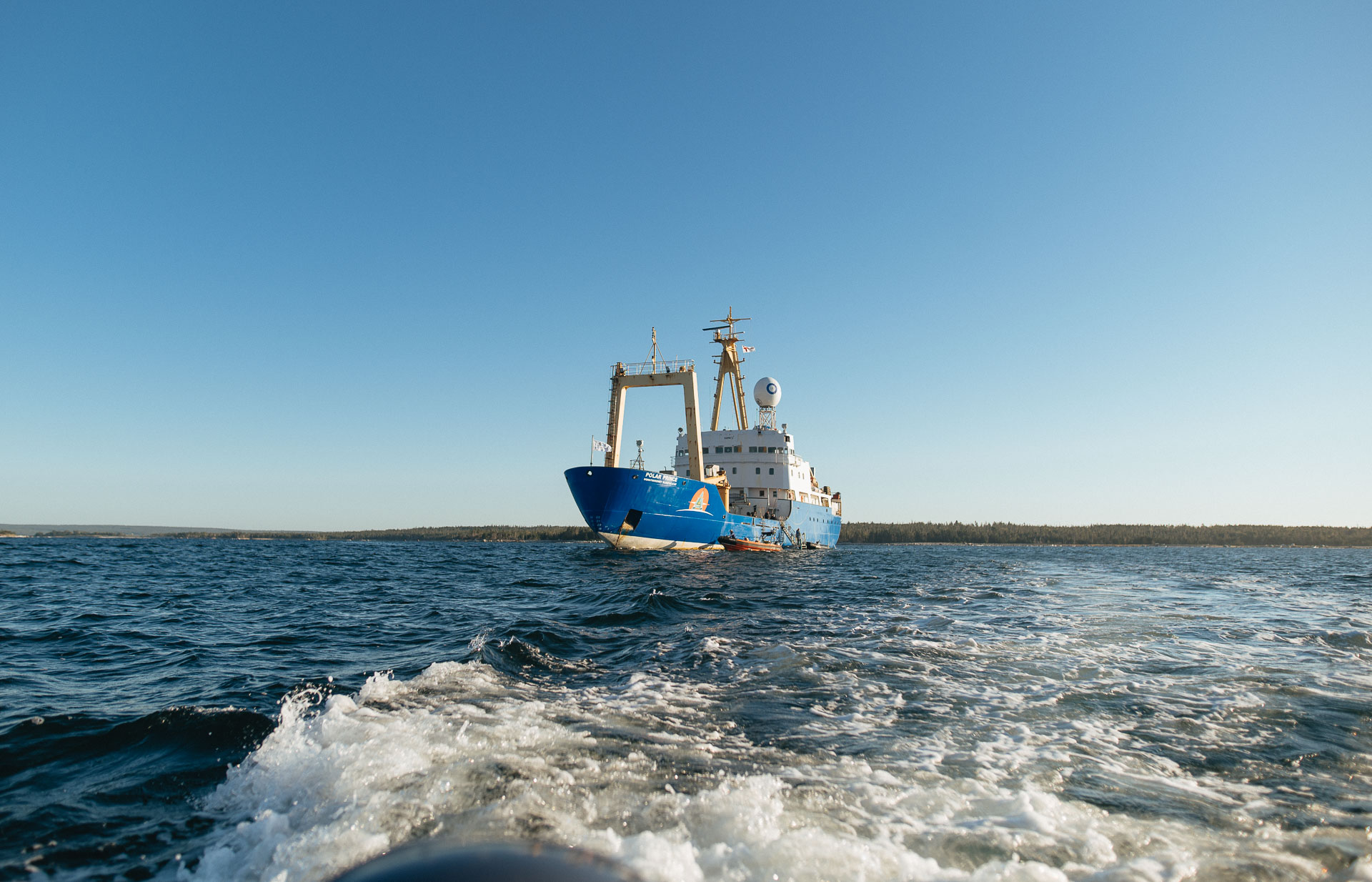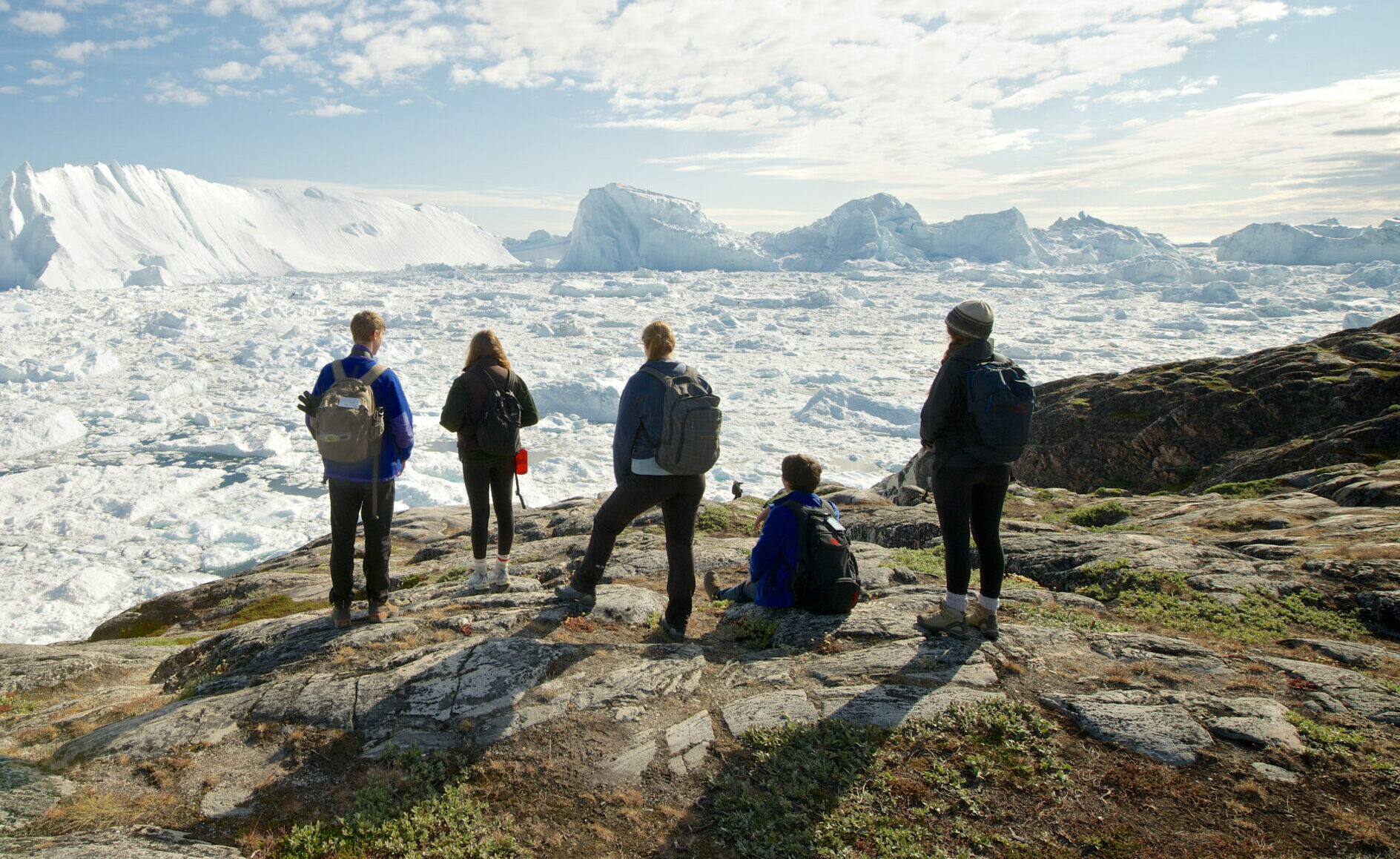The Innu Nation Uinipekᵁ Ocean Expedition: Full Recap
The Innu Nation Uinipeku Ocean Expedition has come to an end but the learning, friendships, and discovery are just beginning! This one-of-a-kind expedition brought Innu youth and community members from both Natuashish and Sheshatshiu, staff from the Innu Nation Environment Office, Innu Nation Park staff, and Innu Guardians from both communities together with government organizations and scientific bodies to learn more about the coastal and marine environments of the Innu Nation.
This 21-day journey was broken down into three distinct legs. While the participants and the locations changed across the different legs, the central focus remained consistent: increasing the knowledge and understanding of the Innu Nation coastal and marine environments alongside providing hands-on experiences in science, mariner skills, and storytelling for Innu youth.

As part of the Innu Nation Inshore Monitoring and Stewardship project which combines Innu Knowledge with field studies to create a better understanding of Innu marine environments, our expedition team visited some incredible locations including the Natuashish and Sheshatshiu marine areas, Atatshi-uinipeku (Lake Melville), Akami-Uapishkᵁ-KaKKasuak-Mealy Mountains National Park Reserve, Groswater Bay, Gannet Islands Ecological Reserve, the Wunderstrands, the Herring Islands, the Soloman Islands, and Utshimassits (Davis Inlet).
Each day was filled with a combination of data collection, zodiac cruises, shore landings, and ship time. Youth were invited to get involved in all of the different research projects and got to work with the crew on board the ship learning mariner skills, they even got an opportunity to captain an icebreaker. It was fantastic to see how different youth gravitated to different projects and elements of the expedition, growing their individuality, curiosity, and confidence.

This is one of the goals of all expeditions Students on Ice is a part of: How can we expose youth to a variety of new and different things that may interest them, and how do we get them to want to learn more? Some participants told us they want to pursue careers as mariners, eventually becoming captains, while others are keen to spend more time engaging in the sciences and want to grow their passion for combining Indigenous knowledge and Western science. But, by the end of our journey, it was clear that everyone was interested in the ocean environment.
The research data that was collected throughout this expedition wouldn’t have been possible without some other amazing research partners including the Canadian Museum of Nature (CMN), Canadian Wildlife Service (CWS), Canadian Hydrographic Service (CHS) and the Huntsman Marine Science Centre.

Some of the research projects had data points from many decades ago that we were able to add to. One example was the bird data collected by the CWS. Throughout the expedition, youth were learning and practicing their seabird identification skills and could regularly be found out in zodiacs or up on the bridge with the CWS team. They could even sometimes be spotted practicing their seabird dance moves on the aft deck – not very scientific but a lot of fun!
In other cases, some data was being collected for the first time, such as the data collected by the SCUBA team from the Canadian Museum of Nature and the Huntsman Marine Science Centre. Both of these teams explored life below the water as part of a biodiversity survey. Youth were invited to help the divers get suited up and many loved being in the boat when the divers resurfaced with some fun ocean critters for examination. Piloting the Innu Nation ROV was a big hit with the youth and we often watched the videos they captured during the day at our evening gathering in the hangar. Not only was it fun and engaging, but the data collected will also be used to aid in these research projects.

Late at night, the Canadian Hydrographic Service was gathering new data as they worked to map the seafloor and update charts. Although a lot of their work happened while the rest of us were sleeping, participants were always invited into their office to see what they were up to.
Fisheries and Oceans Canada (DFO) took the lead with a lot of hands-on research activities that engaged the Innu youth such as water sampling and environmental DNA collection and filtration. The team also got to try their hand at conducting seafloor grabs and setting baited cameras that monitor for both native and invasive species. Another one of DFO’s research projects involves collecting data on ocean currents. In order to collect this data, our team helped launch a series of drifters, each with a meaningful Innu name.
“I wasn’t really interested in science. Until I came here. When I started this expedition and learned about the science, it was quite interesting. And I’m probably going to continue learning about it when the expedition is done.”
– Youth Participant Annette Pokue

While research and discovery were the impetus behind this expedition, the experience and impact were so much more than data collection alone. Many of the youth participants commented on how grateful they were to simply be out on the land. Youth Participant Keshkun Nuke shared, “I’m grateful to be here, to be out on the land, all the time to be connected with the land. I think that’s important to our culture… and I’ve gotten to learn new things about my culture, too. I don’t do these kinds of things at home. Being here is a privilege with all these people. I feel very alive.”

Each leg was uniquely special. Something magical happens when people gather on a ship as a learning community with no other distractions. Youth Participant Loreena Kuijper-Andrew said “I feel like that connection part here is super important. We’re all together all the time. We’re out on the land. We’re learning together. And I think that’s my favourite part. Just being with everyone learning more.”
Together, we learned, laughed, and danced, as we shared many firsts including jumping into the ocean, driving zodiacs, making bannock, and so much more. Our team was consistently impressed by the youth pushing themselves beyond their comfort zones to try new things.
“At first getting out of my comfort zone is a bit overwhelming. Then I just keep telling myself it’s going to be okay. And it’s actually a really good feeling because you’re trying new things, and you’re not just stuck in the same old comfort zone. You have to change your perspective in life.”
– Youth Participant Annette Pokue.
As with all Students on Ice expeditions, the end is just the beginning, and there is no doubt that the success of this expedition will lead to many positive outcomes, initiatives, and impacts. We’re thrilled to welcome all of these participants into our alumni family and we can’t wait to see what they get up to next!





